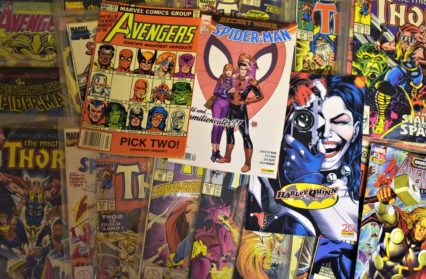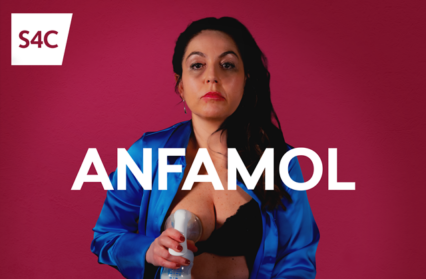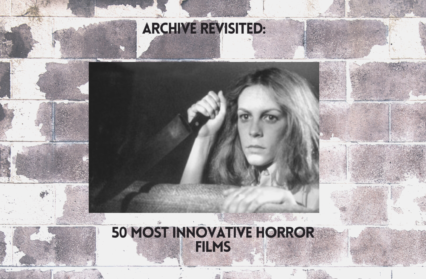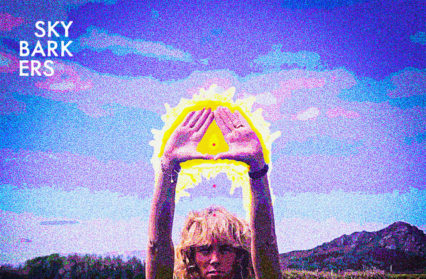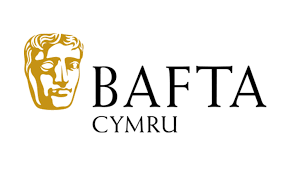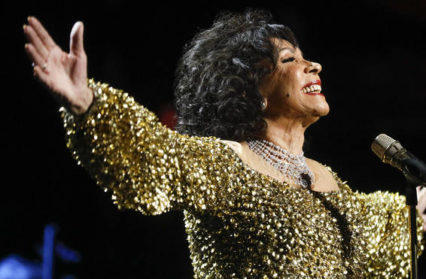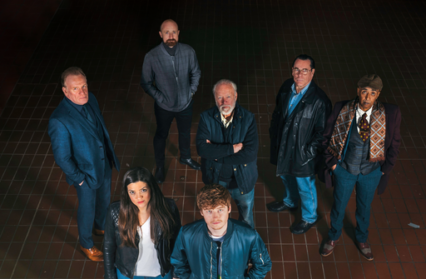Marvel Phase One | Whether you’re a Marvel Cinematic Universe superfan, or a newcomer trying to get to grips with this sprawling world of gods, soldiers and men in iron suits, Isobel Roach provides a whirlwind round-up of Marvel’s three completed phases. Here, she kicks things off with her analysis of the six films used to initiate Marvel’s box office domination.
There was an idea called the Avengers Initiative. This idea was to bring together a group of remarkable characters to see if they could become something more. To see if they could form the most ambitious and high-earning cinematic franchise of all time.
I don’t need to keep misquoting Nick Fury to hammer the point home; even the most reluctant of cinema goers can look at a red and gold helmet and recognise “genius billionaire playboy philanthropist” Iron Man. You’ve probably seen Captain America’s patriotically patterned shield plastered all over the window display of your nearest Disney store, a resplendent symbol of freedom and commerce. And all it takes to evoke the Incredible Hulk these days is a single shade of green.
Perhaps you’ve come across these movies fleetingly, tuning in to scenes of grandiose comic book action and tuning out again when the next cinematic instalment hits our screens. Or maybe, like me, you’ve thrown yourself in at the deep end, showing up to watch 2016’s Civil War in a Captain America t-shirt and matching ring.
No? Well regardless of how healthy your obsession for Steve Rogers is, I hope you’ll agree that there’s something quite special about the Marvel Cinematic Universe (Or MCU for short) and that its overwhelming box office success merits unpacking. It’s a franchise that’s incredibly universal, deeply personal, occasionally political and always entertaining. What could be more fascinating than picking apart the intricacies of the MCU – going right back to the very beginning – to see what makes this well-oiled machine tick?
With far too much time on my hands and a burning desire to escape the tedium of another national lockdown, I’ve decided to do just that.
The journey begins with a trip back in time – all the way to 2008 – and a remarkably perfect piece of casting. To say that Marvel Studios owes a huge debt of gratitude to Robert Downey Jr. is an understatement. Iron Man is a story of birth and rebirth; one that has played out both on and off screen in a meta kind of dual narrative. As much Marvel’s cinematic origin story as it is Tony Stark’s, Iron Man marked a clean slate for RDJ, and one that would come to define his acting career. It’s hard to say exactly where Downey Jr. ends and Stark begins as we watch the engineering genius spark off witty dialogue with a twinkle in his eye and a sense of charming yet glib confidence.
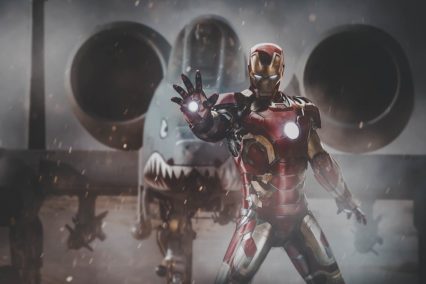
But I did say this was a story of rebirth, didn’t I? Tony’s years of weapons manufacturing catch up with him when he’s captured by a terrorist group and forced to build them a lethal missile against his will. It’s a trial by fire that’s surprisingly gritty, especially in comparison to Marvel’s later rogues’ gallery of vaguely fantastical villains, many of which aren’t grounded in the real world. In the dank darkness of a cave with the aid of a fellow captive (an archetypal ‘mentor’ in line with Joseph Campbell’s idea of the hero’s journey), Tony decides to make a suit. It’s rudimentary, clunky, rough around the edges – but it’s the start of something much bigger than himself. Tony Stark turns himself into a superhero, battling his way out of captivity and back into the safety of his California mansion with its hidden hi-tech lab.
It sounds fanciful because it is; Marvel makes the important and defining decision to deviate from previous superhero adaptations like Christopher Nolan’s gorey, realist Dark Knight trilogy, and instead create something that never takes itself too seriously. Therein lies the magic of the MCU – that sense of self-awareness and irreverent humour that undercuts what could so easily be corny or uninspiring. Tony Stark cracks jokes with his AI Jarvis, flies around in an impossibly overpowered suit and flirts with anyone wearing a skirt. On paper it sounds cheesy. On screen it’s an unprecedented joy.
Rewatching Iron Man after all these years, it’s surprising to see just how much effort has gone into setting up future spin offs and establishing what would become a fully fleshed out franchise. Agent Coulson (Clark Gregg) makes an appearance, and so does the concept of S.H.I.E.L.D. with its government secrets and men in black. At this point they’re little more than background noise playing second fiddle to Downey Jr. as he works his leading man magic, but it’s these kinds of easter eggs that have added an extra layer of textual enjoyment to Marvel’s series of films.
With Tony Stark having perfected his suit and tested it against a worthy foe, Iron Man concludes with a sense of audacious optimism; in a press conference Stark reveals his secret identity to the world in a proud declaration that mimics Marvel’s own newfound confidence. But this, of course, is just the beginning.
Marvel Phase One’s next important feature isn’t its forgettable Incredible Hulk (2008), but rather the often overlooked Iron Man 2 (2010). Perhaps leaning a little too heavily on gratuitous and explosive fight scenes, as well as a more noticeable application of the male gaze, Iron Man 2 really isn’t a bad movie at its heart. With a character like Stark, it’s easy to get lost in the glitz and glamour of the uber-rich, uber-powerful lifestyle as Jon Favreau does throughout the first half of his movie – but the film still has an indisputable mark of quality. There’s a richness to its characters – yes, even Mickey Rourke’s Ivan Vanko – and the constant driving force of Downey Jr.’s electric performance in his reprisal of this now iconic role. This film sees the debut of Black Widow (Scarlett Johansson), an important Avenger in her own right and Marvel’s first cinematic superheroine. Yet in the context of Favreau’s feature, Agent Romanoff is there to be looked at more than she is to be taken seriously as a major contender in the MCU – a wrong that would take several more years to be corrected.
As for plot, Iron Man 2 follows a narrative structure that would become central to the MCU in years to come; our hero works to prevent dangerous tech from falling into the wrong hands. It’s interesting that the aforementioned ‘wrong hands’ so often end up being the US military, or an all-American arms dealer that courts war and destruction wherever they go – especially considering the uncomfortable truth that so many Marvel movies are partly funded by the United States military itself…
What was sorely needed was a break from the bullets and the tech and secret government agencies. What was needed in 2011, after the relative disappointment of Iron Man’s second outing, was something entirely fresh and escapist. Enter Thor, god of thunder and impossibly huge pecs. Kenneth Branagh’s Thor is a visually exciting breath of fresh air set partly on Earth and partly on Asgard, the realm of the norse gods. To enjoy Thor to its fullest you need to truly suspend your sense of disbelief – a far from difficult task thanks to the movie’s excellent cast and storyline. Cast out of Asgard and stripped of his hammer Mjölnir as a result of his thoughtless hunger for battle, Thor finds himself trapped on Earth in the company of a ragtag group of scientists. This surprising dynamic offers plenty of opportunities for humour and Chris Hemsworth’s ability to bring a comedic lightness to his performance as the god of thunder is what really brings the movie to life. The full potential for comedy in the MCU won’t be realised until the arrival of writers and directors like James Gunn, Edgar Wright and Taika Waititi, of course – but the early glimmers of something less than serious are present even in Thor’s very first outing.
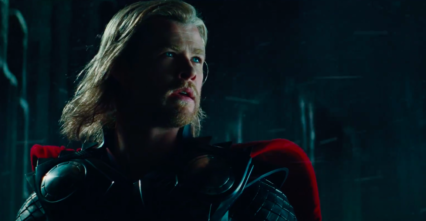
It’s not just Hemsworth that shines in this movie; Thor also marks the dazzling debut of Marvel’s roguish Loki, played with fiendish charisma by Tom Hiddleston. He’s an excellent villain and an even better anti-hero who you can’t help but like to some degree. There’s so much righteousness in the MCU that when a morally ambiguous character like Loki struts on screen with all his misguided pretensions, it’s understandable that fans would flock to him in huge numbers. It’s Loki, in fact, that makes an arguably more significant comeback in Marvel Phase One’s glittering finale. Although there’s one last Avenger to get through before the team can finally assemble.
The final piece of the puzzle takes us back to the beginning – the origin story of all origin stories – with a very skinny computer-edited Chris Evans. Steve Rogers is just a kid from Brooklyn who wants to somehow do his part on the front lines of the second world war. Fortunately for Steve, he’s able to overcome his chronic asthma and general sickliness with the promise of becoming the world’s first super soldier. You’d be forgiven for thinking that Captain America: The First Avenger (2011) might turn out to be a good old-fashioned, patriotic war film – many viewers and critics have been quick to dismiss it as one of the weakest Marvel Phase One movies – but to do that is a disservice to what director Joe Johnston has achieved. The First Avenger forges a founding myth for the concept of the cinematic superhero, and Chris Evans’s Captain Rogers is the golden standard of pure-hearted heroism. Turning from an underdog into a muscular soldier (complete with oiled-up abs), it’s not Steve’s brute strength that matters as much as his ability to do the right thing, no matter what the cost. The ultimate emblem of this commitment to self-sacrificial heroism is the movie’s tragic finale that sees Cap go down with the ship. It’s heart-breaking, and even after all these years (and so many worthy additions to Marvel’s oeuvre) the final, brief conversation between Steve and Peggy packs an emotional punch.
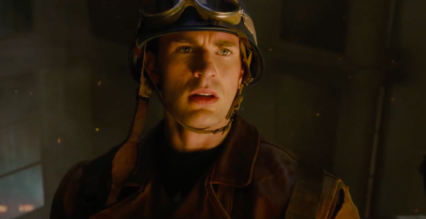
With Evans very much stealing the show, The First Avenger’s extended cast often goes overlooked. Hayley Atwell’s Peggy Carter is one of the most compelling and fleshed out love interests in the MCU. You can really feel that she has a life outside the parameters of the movie and doesn’t exist merely as an object of Steve’s affections. Sebastian Stan’s contribution to this first Captain America instalment is even more subtle, but knowing what’s to come for Bucky Barnes adds an extra dimension of interest to the story.
There’s much more to come for Cap too. Pulled from the ice and defrosted in the 21st century, he’s a man out of time in need of a mission. And one was certainly about to come along.
The buzz around The Avengers (2012) was huge, to say the least. It’s a piece of storytelling (and marketing) genius to bring together a group of separate protagonists and have them share the screen in a single, epic feature film. It’s also a huge risk. The now-controversial Joss Whedon was faced with the task of juggling four widely renowned characters with larger than life personalities as well as adding newcomers and previously side-lined heroes to the mix. And all of this needed some kind of unifying plot – a sense of global danger that could bring the unlikely team together and make it work. Enter Loki; already established as a villain and a fan favourite, Hiddleston reprises his role and leads an army of intergalactic warriors in a quest for world domination. It’s a neatly tied up storyline, and one that seems even more impressive with the knowledge of what’s to come. Avengers plants the seed of infinity stones and the vague, looming threat of Thanos, whose shadowy presence is felt even now in Marvel Phase One.
But what really makes this first Avengers outing a success story, rather than a spectacular failure, is its script. What happens on a small scale – quips between characters, moments of contemplation, the slow process of bonding – is in many ways what fuels the large scale events of the movie. The creative team treat its audience as a discerning and critical group of viewers that won’t all be satisfied with mindless CGI action. Cinemagoers know they’re in for fight scenes, chaos and spectacular team ups – what they’re asking is why should we care?
As it turns out, there are plenty of reasons to get invested in The Avengers. Its cast seems to shine even more as an ensemble than they do individually. Conflict and misunderstanding bring about character development and mark important changes that come to bear on future MCU narratives. All in all, it feels like an ending and a beginning wrapped up in a two hour and twenty four minute movie – the perfect open-ended conclusion to the first phase of something much bigger. Something that would evolve into a brand new era for Marvel.
Isobel Roach is a regular contributing writer at Wales Arts Review.
Marvel Phase One


